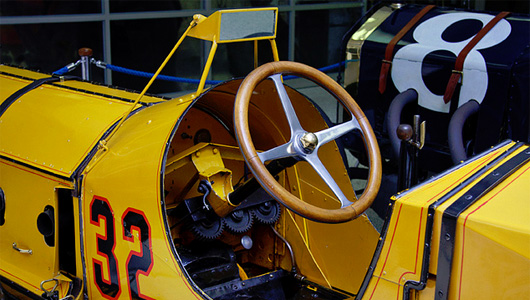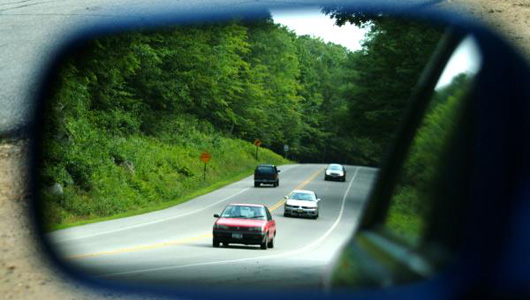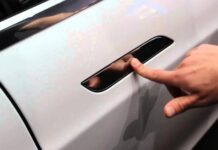Few people know that the rear-view mirror on a car has a history dating back to the early 1900s. What’s even more interesting is that this essential safety device for cars was inspired by the vanity mirrors used by women.
The rear-view mirror, also known as the rear-vision mirror, is a type of mirror that is mounted on cars and some other vehicles. It is designed to allow the driver to see the back of the vehicle, ensuring safety while driving.
 Rear-view mirror is an indispensable safety device for cars
Rear-view mirror is an indispensable safety device for cars
Typically, the rear-view mirror is attached to the top of the windshield. The driver can adjust the angles and direction of the mirror through a pivot. The rear-view mirror is an essential safety device for cars, allowing the driver to observe the traffic situation.
The rear-view mirror was first mentioned in Dorothy Levitt’s book “The Woman and the Car,” published in 1906. In the book, the author suggested that women should carry a small mirror in a convenient location in their car to see things from behind, making their driving safer.
Based on that idea, the rear-view mirror was invented and later introduced by car manufacturers in 1914. The earliest known rear-view mirror was on the Marmon race car driven by the famous American racer, Ray Harroun. It was a surprise to see a straight rear-view mirror attached to car number 32 in the 1911 Indianapolis 500 race.
 Marmon race car – the first car with a rear-view mirror
Marmon race car – the first car with a rear-view mirror
Harroun, therefore, is credited as the first person to use a rear-view mirror on a motorized vehicle. He came up with the idea after seeing a similar device on a horse-drawn carriage in 1904, and he thought it would be useful to have a mirror on a car to easily observe his competitors from behind.
 Rear-view mirror attached to the steering wheel of a Marmon race car
Rear-view mirror attached to the steering wheel of a Marmon race car
However, Elmer Berger is also considered as the first inventor of the rear-view mirror. Some people have known about Elmer’s invention since 1900. Later, Elmer applied his invention to the regular rear-view mirrors mounted on cars.
As traffic on the roads became more congested, drivers began to see the limitations of the old-style rear-view mirrors. There were many blind spots, especially on the sides, when the mirror was mounted inside the car. In addition, the rear-view mirror mounted on the windshield would often lose its effectiveness when there were passengers or cargo in the car. As a result, car manufacturers started researching and developing rear-view mirrors that provided a wider field of view. The new type of rear-view mirror was called a wing mirror, which was mounted on the sides of the car.
 Wing mirror (side mirrors) of a car
Wing mirror (side mirrors) of a car
Nowadays, all cars are equipped with these side mirrors. The side mirrors are mounted on the exterior of the car, allowing the driver to have a better view of what’s behind the car. Furthermore, the side mirrors can be adjusted flexibly to achieve the best angle for each driver’s height and position.
As technology continues to advance, the rear-view mirror has evolved beyond just a mirror. It now integrates various functions such as compass, temperature gauge, and traffic safety alerts. All of these features are aimed at providing convenience, safety, and the best observation experience for drivers. Of course, the initial inventions of the rear-view mirror, though simple, were extremely important. They laid the foundation for the development and integration of technology in rear-view mirrors in the future.
Thế Đạt (TTTĐ)









































